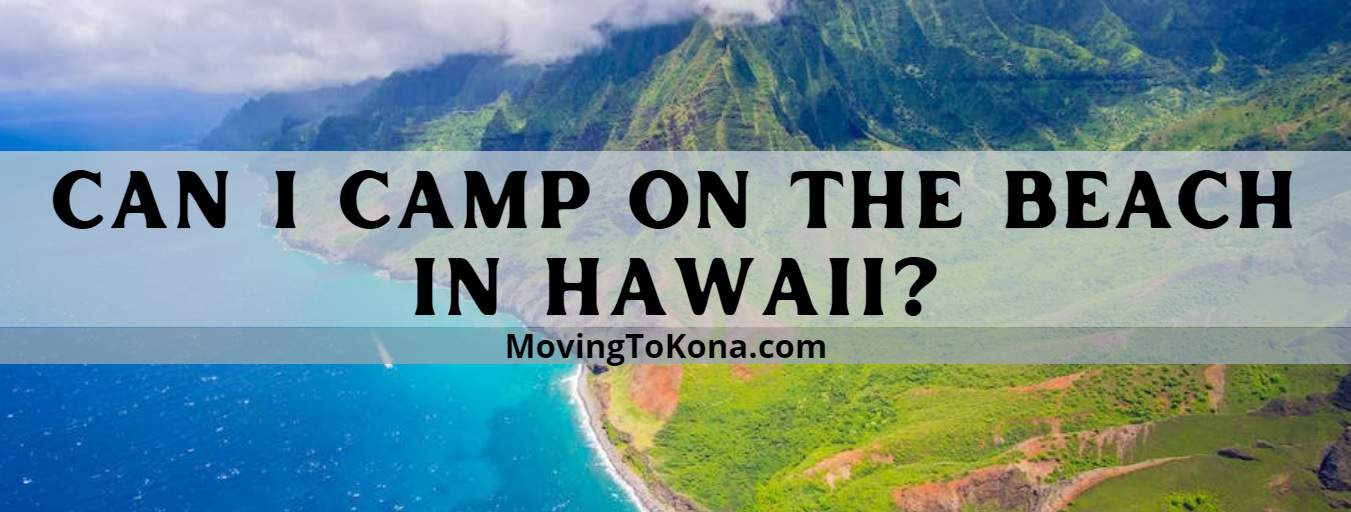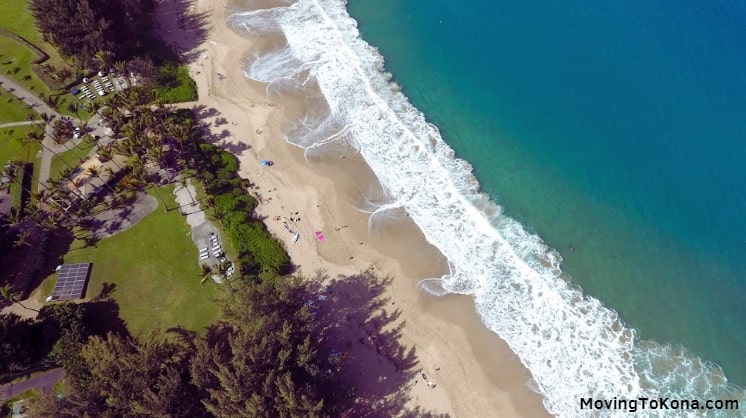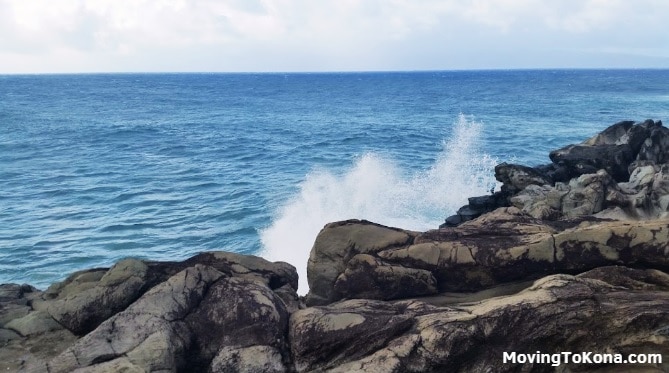Can I Camp on the Beach in Hawaii?

Why Camping on the Beach in Hawaii is Awesome
Camping on the beach in Hawaii is a great experience because of the endless possibilities of activities you can enjoy. From swimming and surfing in the warm waters to hiking and exploring the ancient volcanoes and canyons, there is something for everyone. Not to mention, the cost of the camping accommodations are unbeatable, some are $20 a night and others are only a few dollars. Plus, if you decide to pitch your tent on beaches like Hulopoe or Bellows Field, you can fall asleep to the sound of crashing waves and jump into the ocean the moment you wake up. With so much to see and do, beach camping in Hawaii is definitely a great experience.

What You Need to Consider When Planning a Beach Camp in Hawaii
1. Choose a camping beach.
When choosing a beach to camp on in Hawaii, there are several factors to consider. First, it is important to ensure your camping spot is level and protected from both the wind and the sun. Additionally, it is crucial to select a spot that is not in danger of flooding due to high tide if you are camping close to the ocean. Ensuring there are no rocks or roots on the ground your tent will stand on is also important for a comfortable camping experience.
It is also important to make sure you have access to potable water, that you can park your vehicle close enough to your spot to keep an eye on it, and that restroom facilities are within a reasonable distance. Finally, it is important to think about the layout of your camping spot: where you will cook, wash up, eat, and light a fire. Pay attention to the prevailing wind direction (in Hawaii mostly from East to West) and make sure your fire will not blow smoke into your tent. With the right preparation, you can enjoy the experience of camping in paradise, along the beaches of Hawaii.
2. Find a camping spot in the area.
Step 1: Choose a level place to pitch your tent that is protected from wind and sun. Look for spots that are not in a potential puddle and far away from the ocean, as spots that look dry during low tide may flood during high tide.
Step 2: Check for rocks or roots on the ground where you will be setting up the tent.
Step 3: Make sure you are close to a potable water supply, and if you have a vehicle, make sure you can park close enough to keep an eye on it.
Step 4: Check the location of restroom facilities and make sure they are within a reasonable distance.
Step 5: Make sure you have a plan for where to cook, eat, wash up, and light a fire. Take into account the prevailing wind direction (in Hawaii, mostly from East to West).
Step 6: Get your permits online and make sure to print out or save the information on your phone.
Step 7: Consider bringing a toiletry set up, a water filter, and extra toilet paper.
Step 8: Be aware that wild camping (backcountry camping) requires permits and there is no free camping in Hawaii. Do your research ahead of time to make sure you are following the rules and regulations.
3. Consider the weather conditions.
When planning a beach camping trip in Hawaii, there are several factors to consider in order to ensure a safe and enjoyable experience. Firstly, campers should find a level, protected spot that is sheltered from both the wind and the sun. It is important to ensure that the spot is not prone to flooding in case of rain or high tide and that there are no rocks or roots on the ground. Additionally, you should check if a potable water supply is close by, as well as facilities such as restrooms. Campers should also be aware of the prevailing wind direction and plan their campsite accordingly. Furthermore, it is important to bring along the right gear according to where they are camping. For example, on Kauai and The Big Island, where there are mountains and volcanoes, camping gear appropriate for hiking should be brought. On the other hand, for islands such as Maui, Oahu and Molokai, which are known for their beaches, flip flops and swimsuits are essential. Finally, it is important to bring along reef-safe sunscreen and bug spray as well as to purchase the necessary permits for camping.
4. Check the beach rules.
When planning a beach camp in Hawaii, there are some beach rules that should be taken into consideration. Firstly, it is not legal to sleep on the beach after dark, even if you have a permit. Campsites are designated next to the beach, not on the beach. Secondly, most beaches in Hawaii require permits to make sure they’re not overrun with campers. Make sure to book these in advance and have them saved on your phone or printed out to bring with you. Thirdly, each campground has its own rules, such as what time the gates close, whether fires are allowed and if dogs are allowed, so be sure to check this information before booking. Additionally, for safety reasons, do not leave any items on the beach without you being there. Finally, Rise early for a breathtaking sunrise over the cliffs and enjoy a tranquil day on a beach known for its fine gray sand. Make sure to bring essentials such as a beach blanket, polarized sunglasses, and flip-flops, as well as after-sun lotion in case you didn’t re-apply.

5. Look for camping amenities nearby.
When planning a beach camp in Hawaii, you should look for a level spot to pitch your tent that is protected from both the wind and sun. Make sure there are no rocks or roots on the ground where your tent will stand, and be aware of the tides if you are camping close to the ocean. Check for access to a potable water supply, and for a place to park your vehicle close to your camping spot. Look out for restroom facilities and if the campground has a grill pit.
For a luxurious camping experience, you can look for campgrounds that provide amenities such as linens, electricity, Wi-Fi, and hot running water. Look for specific rules such as fire restrictions, gate closing times, and pet policies. With all these things in mind, you can have a safe and comfortable beach camping experience in Hawaii.
6. Check for campground fees.
Camping fees for beach camps in Hawaii depend on the campground and the number of persons. For Hawaii residents, the fees are typically $3.00 per adult, per night, up to a maximum of $20 per campsite per night for up to 10 persons. For non-residents, the fees are typically $25.00 per day for up to 5 campers, or $25.00 per day for up to 10 campers (including ADA sites). At Lydgate Campground, the fees are $75 per day for 20 or more campers, up to a maximum of 200 campers. All fees must be paid via credit/debit card at the time of reservation, and all fees are non-refundable. Campers, camper vans, and trailers are not allowed in the campgrounds, with the exception of Waiʻānapanapa State Park on Maui, which has a designated area for camper vans. It is important to be prepared for camping with a toiletry set up that includes toilet paper, wet wipes, hand sanitizer, soap, rag, towel, mirror, and anything else you need.
7. Make sure you have the necessary supplies.
When camping on the beach in Hawaii, you should make sure to be properly prepared. It is essential that you have all the necessary gear and supplies to make your camping experience as enjoyable and hassle-free as possible. Here is a list of supplies you should have on hand:
- A reliable waterproof tent
- A headtorch
- A rain jacket
- A day pack with a rain cover
- Waterproof hiking boots
- A camera
- Sleeping bags and pads
- A refillable water bottle
- Toilet paper
- Wet wipes
- Hand sanitizer
- Soap
- A rag
- A towel
- A mirror
- A water filter
- A first aid kit
- A hanging toiletry bag
- Non-toxic soap
- Clothesline
- Lanterns or flashlights
8. Know the terrain and difficulty of the hike.
When planning a beach camp in Hawaii, there are several factors to consider.
First, you should research the area you plan to camp in order to determine the level of difficulty of the terrain. Make sure you are familiar with any trails you plan to take and be sure to bring a group to ensure safety. It is also important to bring plenty of water and a filter if you plan on drinking from streams, as well as any first aid supplies you may need.
Second, you should check the weather forecast prior to your camp to ensure that it is safe to camp on the beach and that the weather will not put you in any danger. It is important to be aware of any potential storms or heavy rainfall that may occur during your stay, as this can make trails difficult, and even dangerous, to navigate.
Third, you should research the campsite you plan to use and read reviews from other visitors. This can help you determine if there are any issues with the campsite, such as uncleanliness or homeless people living in the area.
Finally, you should be aware of the local culture and customs of Hawaii in order to ensure that your presence is welcomed. Be aware of any laws or regulations that may impact your camping experience and respect any areas that may be off-limits or culturally sensitive.
By following these considerations, you can ensure a safe and enjoyable beach camping experience in Hawaii.
9. Have a safety plan.
A safety plan is an important set of guidelines to follow when camping in Hawaii, or any unfamiliar area. Its purpose is to ensure that everyone remains safe and healthy while camping, as well as to protect the environment. This plan should include information about the environment, safety rules and regulations, necessary supplies, and emergency preparedness.
The Hawaiian environment can be both beautiful and dangerous, so it is important to have a safety plan to help you avoid potential risks. It is essential to research the area before you begin camping, in order to become familiar with the environment, local wildlife, and possible safety hazards. Additionally, abiding by local and national laws, as well as following posted signs and warnings, can help keep you safe.
Having the proper supplies is key to camping safely in Hawaii. It is especially important to have plenty of water and bug spray, as dehydration and bug bites can be a major issue. Additionally, having a first-aid kit, a cell phone, and a hanging toiletry bag can all ensure you have a safe and comfortable camping experience.
Overall, creating a safety plan is essential to ensure a successful and enjoyable camping experience in Hawaii. By researching, following safety rules and regulations, having the proper supplies, and being prepared for any emergency, you can ensure a safe and memorable camping adventure.
The Best Places to Camp on the Beach in Hawaii
1. Anahola Beach Park, Kauai
Anahola Beach Park is an excellent beach camping spot in Hawaii, due to its convenient location in a residential area, its facilities and amenities, and the calm waters of its horseshoe-shaped white-sand beach. It is one of the most protected beaches on the east side of Kauai, with a reef offshore making the waters especially calm for swimming, snorkeling, boating, and kayaking. The park also includes restrooms, outdoor showers, and drinking water for campers’ convenience. Moreover, it is close to the village of Anahola, where campers can enjoy a variety of delicious restaurants if they tire of campfire beans. From $18 per night, campers can have an unforgettable beach camping experience while also taking in the breathtaking beauty of the island.
2. Bellows Field Beach Park, Oahu
Bellows Field Beach Park is a great place to camp on the beach in Hawaii due to its stunning views, amenities, and activities. Located in Waimanalo, just a short drive from Honolulu, Bellows Field Beach Park offers amazing sunsets, beach access, and majestic mountain views. The beach is lined with tree-shaded campsites and boasts a soft white sand beach and crystal clear blue waters, perfect for swimming, snorkeling, paddling, surfing, and more.
The beach is equipped with amenities such as snack stands, BBQ grills, restrooms, showers, a souvenir shop, picnic tables, and a playground. Campers can also take advantage of the proximity to other popular spots on the east side of Oahu such as Lanikai Pillbox, China Walls, Makapu’u Lookout, and more. Campsite fee is from $27 per campsite per night, and there is a 3-day permit for $32 or 5-day permit for $52. Camping at Bellows Field Beach Park is truly a taste of living on a private island and is a great way to experience the stunning beauty of Hawaii.
3. Malaekahana State Recreation Area, Laie, Oahu
Malaekahana State Recreation Area in Laie, Oahu is an idyllic spot for beach camping. The campground is located just 5 minutes away from Oahu’s renowned North Shore and offers a peaceful getaway from the hustle and bustle of the island. With a selection of up to 74+ spacious campsites, each equipped with picnic tables, water spouts, and fire pits, you are sure to have a comfortable camping experience. You can also enjoy a variety of recreational activities, including swimming, kayaking, stand up paddle, body surfing, and surfing. The area also features stunning sunrises and Goat Island which can be accessed on a low tide. Furthermore, there are nice facilities such as bathrooms with indoor showers, a large grassy field, and dishwashing sinks. All in all, Malaekahana State Recreation Area is a great place to experience the best that Oahu has to offer.
4. Whittington Beach Park, Hawaii Island
Whittington Beach Park is a great place to camp on the beach in Hawaii due to its incredible under-the-radar getaway, where visitors are more likely to encounter locals instead of tourists. With 37 campsites, it has more amenities than most, including grills and even some indoor showers. The white sandy beach is perfect for soaking up the sun and swimming in the protected bay, which is great for beginners. The park also offers stunning views of the towering waterfall-covered mountains, and is situated alongside the Hanalei River. Plus, visitors can brave the famous roaring surf or explore the shoreline at low tide by wading out to Goat Island. All in all, Whittington Beach Park is the perfect spot for beach camping and surfing in Hawaii.
5. Tranquil Luxury Villa with Spa in the Mountains – Kauai
Tranquility Luxury Villa with Spa in the Mountains on Kauai provides a luxurious and unique glamping experience for those seeking serenity and relaxation. Nestled in Kauai’s lush mountains, you’ll get to take advantage of the on-site spa, walk around the breathtaking landscapes, or relax on your spacious deck. Other features of the villa include a lychee farm with 20 other varieties of exotic fruits, luxurious accommodations and facilities, and access to the Akaka Falls State Park, Waipio Valley, and the sights and adventures along the Hamakua Coast.
6. Papohaku Beach Park, Moloka’i
Papohaku Beach Park is an amazing beach camping spot located in the East of the island on the Big Island. Its unique sights and its secluded location make it an ideal place to camp and unwind. The park features a rocky, volcanic coastline with black sand beach and lush green fields, home to some of the island’s oldest trekking trails, such as the Ke Ala Loa O Maui and the Piilani Trail. You can also explore the freshwater caves located in the area. Papohaku Beach Park has picnic tables and a pavilion, plus restrooms and showers, so you can relax and rest without having to worry about being too far away from civilization. The camp’s secluded location also makes it a great spot for swimming and surfing, but be sure to be careful in the water as the currents can be strong. The campsite fee is $5 per person per night, and it’s definitely worth it for the unforgettable experience of beach camping in Hawaii.
7. Whittington Beach Park, Hawaii Island
Whittington Beach Park, located on the North Shore of Oahu, is one of the best places to camp on the beach in Hawaii due to its secluded location and breathtaking scenery. The beach itself is a white sandy stretch of paradise and the turquoise waters provide a safe, shallow swimming area. The park also has 37 campsites, grills and even some indoor showers, making it a perfect spot for beach camping in Hawaii. Away from the hustle and bustle of the North Shore, you’ll be more likely to encounter locals than tourists. And when the tide is low, you can even wade out to Goat Island. Hanalei Beach Park, located on the opposite end of Oahu, is another great beach camping spot. This picturesque town sits among taro fields and the beach provides a protected bay for safe swimming. Plus, you’ll have all the conveniences of Hanalei Town at your fingertips. Lastly, Lucy Wright Park on the southern end of Kauai is a historical site as this is where Captain James Cook first made landfall in 1778. It also offers an interesting mix of white, black and green sand and is the closest campsite to many attractions like Waimea Canyon and Kokee. All in all, Whittington Beach Park is one of the best places to camp on the beach in Hawaii and provides a unique and unforgettable experience for beach campers.
